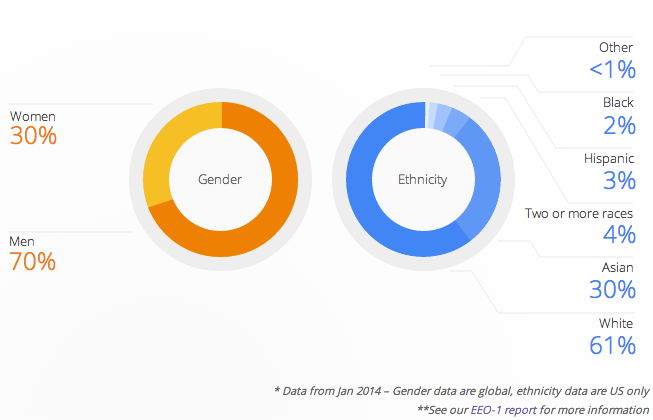
This post first appeared on August 13, 2015 and has been updated
New:
Female Tech Leaders Create New Group To Fix Silicon Valley’s Diversity Problem
It’s no secret that Silicon Valley tech companies are a bit of a White and Asian boys club. In an open letter, the Rev. Jesse Jackson, who founded the Rainbow Push Coalition, pointed out that Blacks and Latinos are grossly unrepresented in the Silicon Valley workforce. He called it “inexcusable, unacceptable and inconsistent with the values espoused by tech companies.”
Women are also underpresented, especially among tech workers. I don’t need a report to tell me that most of the employees I see lunching at Silicon Valley company cafeterias are men. In June Facebook issued a diversity report and even though its second highest executive (COO Sheryl Sandberg) is female, women make up just 32 percent of its total workforce and only 16 percent of its tech workers. Fully 90 percent of its workers are either White or Asian. In its latest diversity report, the company admits “it’s clear to all of us that we still aren’t where we want to be,” and said “We remain deeply committed to building a workplace that reflects a broad range of experience, thought, geography, age, background, gender, sexual orientation, language, culture and many other characteristics.
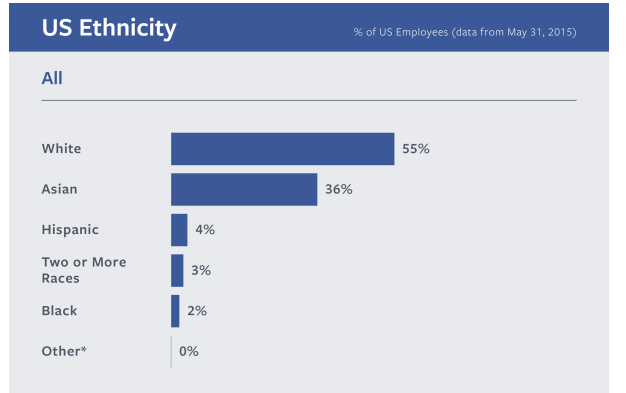
Last year Google reported that its workforce was:
- 30 percent female
- 2 percent Black
- 3 percent Hispanic
- More than nine in ten employees were White or Asian
As Google pointed out in its report, “There are lots of reasons why technology companies like Google struggle to recruit and retain women and minorities. For example, women earn roughly 18 percent of all computer science degrees in the United States. Blacks and Hispanics each make up under 10 percent of U.S. college grads and each collect fewer than 10 percent of degrees in CS majors.” In May, Google’s vice president of people operations told USA Today that the company will spend $150 million this year on diversity efforts.
In its just released Inclusion & Diversity report, Apple CEO Tim Cook wrote that “Apple has always been different,” but from a gender standpoint, it’s pretty typical of its peers. The report disclosed that its employee-base is:
- 69 percent male
- 31 percent female
- 72 percent White and Asian
Though it does seem to have a higher percentage of Hispanics (11 percent) and Blacks (8 percent) than some of the other large companies. This year, however, Apple has made significant progress. In the past year its new global hires are 35 percent women and in the U.S. 13 percent Hispanic and 11 percent Black, according to its diversity report.
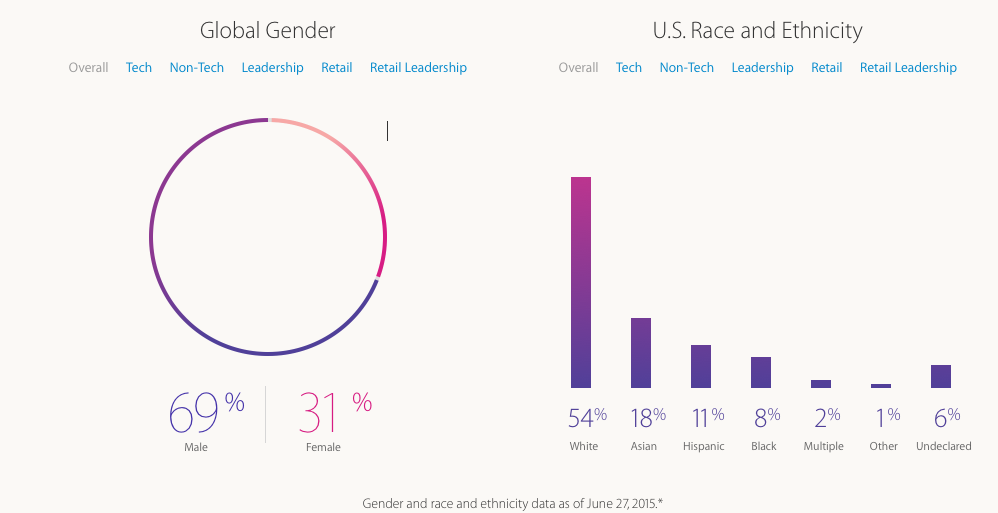
Apple, Google, Intel and several other companies are publicly disclosing data contained in EEO-1 reports that they are required to submit to the federal government’s Equal Employment Opportunity Commission. The government doesn’t disclose company reports (only aggregate data), but last year the Rainbow PUSH Coalition asked more than 25 technology companies to publicly release their EEO-1 reports and many have complied.
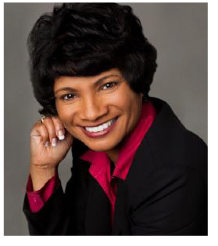
Intel has also had its struggles. Overall men outnumber women by a ratio of three to one and four to one among tech workers. But the company has been working hard to change the ratios, according to its chief diversity officer Rosalind Hudnell, who I spoke with the day Intel released its 2015 mid-year diversity report. The company’s long-term goal is to achieve “full workforce representation in the U.S. by 2020.”
As per the short-term, Hudnell said that the company exceeded its goal of 40 percent diversity hiring for the first part of this year with 43 percent of new hires being either female, African American, Hispanic or Native American. She said that “about 80 percent of our employees are in the technical skill sets — engineering and computer science and the reality is that we don’t have enough young people going into those careers in this country,” but added that Intel recognizes that “we need to do a better job of hiring the talent that’s available.”
So far this year, Intel has hired 1,035 women representing 35 percent of new hires. African Americans represented 4.7 percent of new hires and Hispanics 7.5 percent. Native Americans represented 0.3 percent.
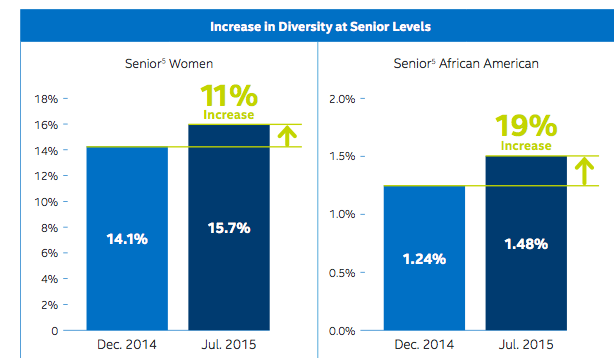
Women fill 15.7 percent of senior level positions at Intel, which represents an 11 percent increase over last year, according to Hudnell. African Americans hold only 1.4 percent of senior positions but that’s 19 percent better than it was in 2014. Hudnell stressed that the company is committed to increasing diversity from entry level to senior leadership positions.
As is reflected in every diversity report I reviewed, Hudnell said that there is plenty more work to do and that it will take time before the Silicon Valley workforce is reflective of the broader population. And, as just about every industry diversity official points out, the problems don’t start at the personnel office but in the supply chain of available and qualified workers.
Still, while not necessarily speaking about Intel or the other companies mentioned in this column, Rev. Jackson told USA Today last week that most companies “have been disappointingly slow” when it comes to improving diversity.
“Slow” is not a term we often hear applied to tech companies, but unfortunately Moore’s Law applies to semi-conductors doubling in performance every 18 months or so. It’s no excuse, but humans evolve at a much slower pace.
Larry Magid is CEO of ConnectSafely.org, a non-profit Internet safety organization whose contributors include Facebook and Google.
